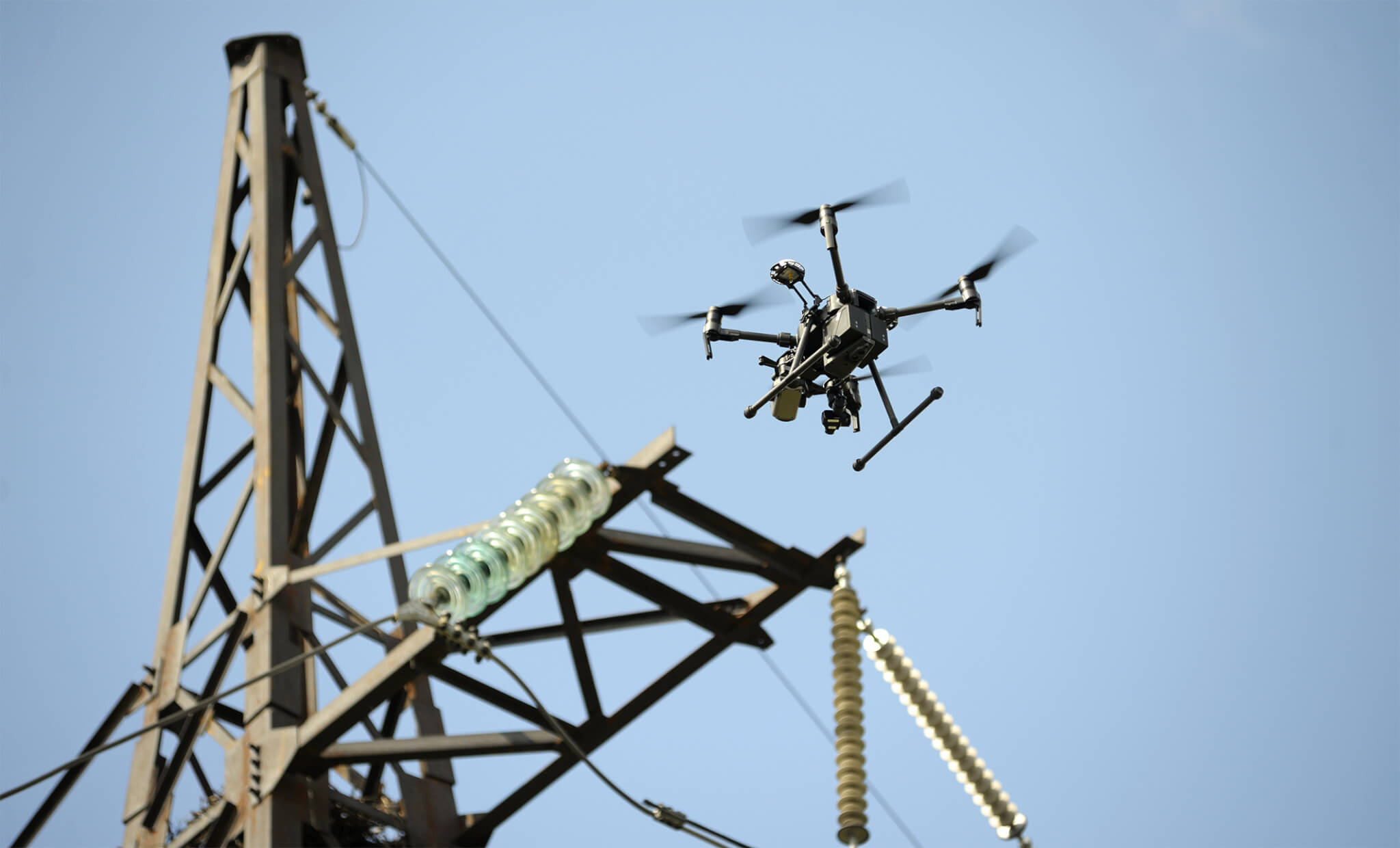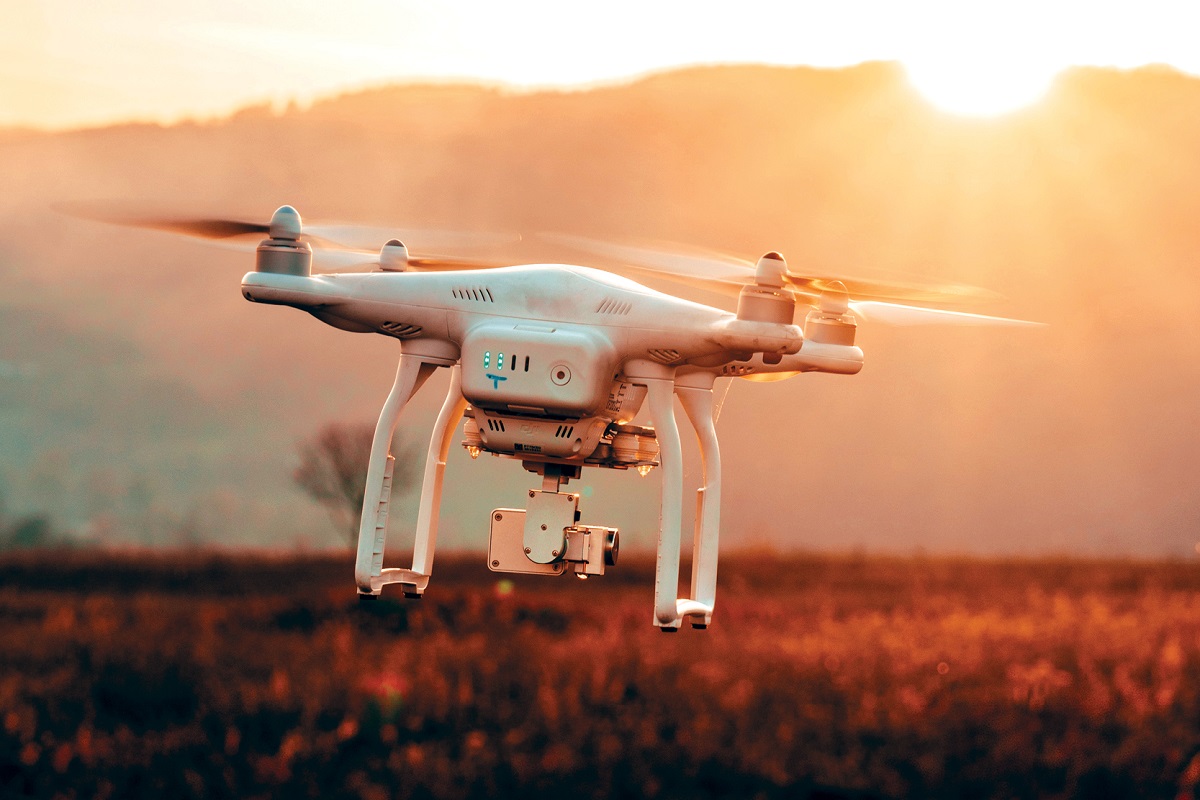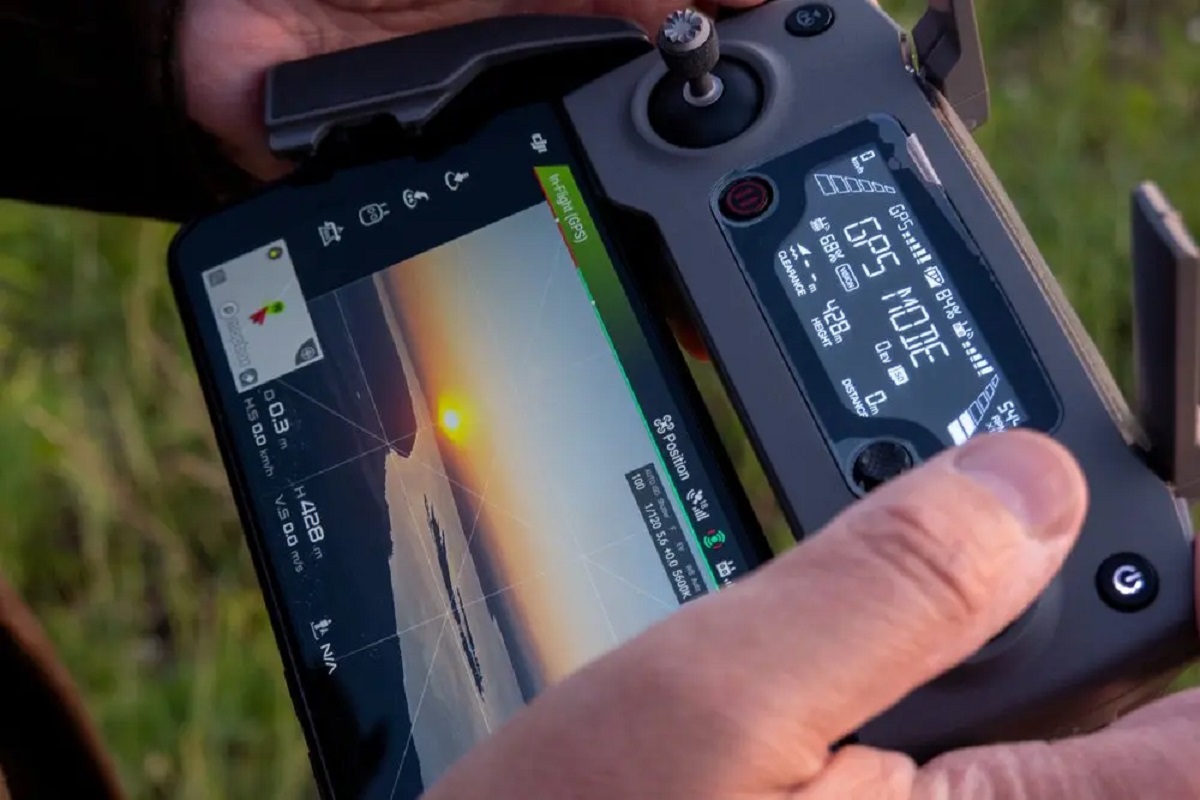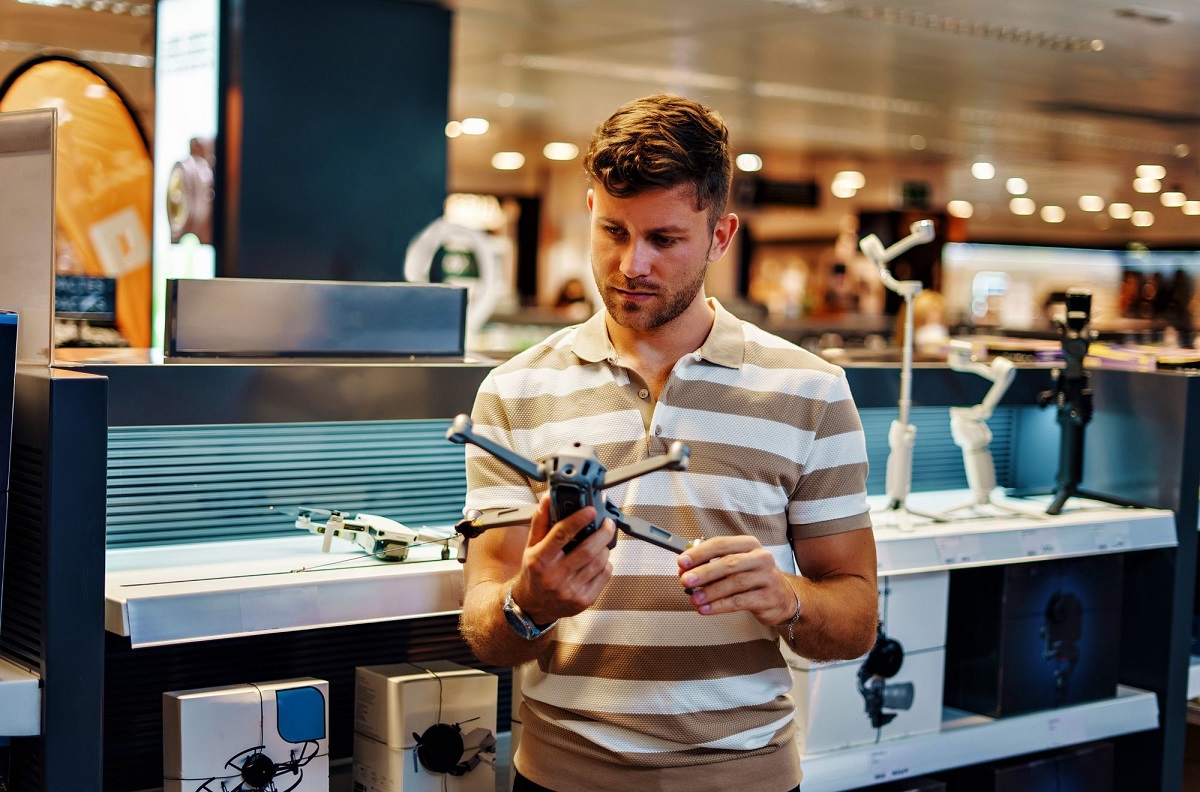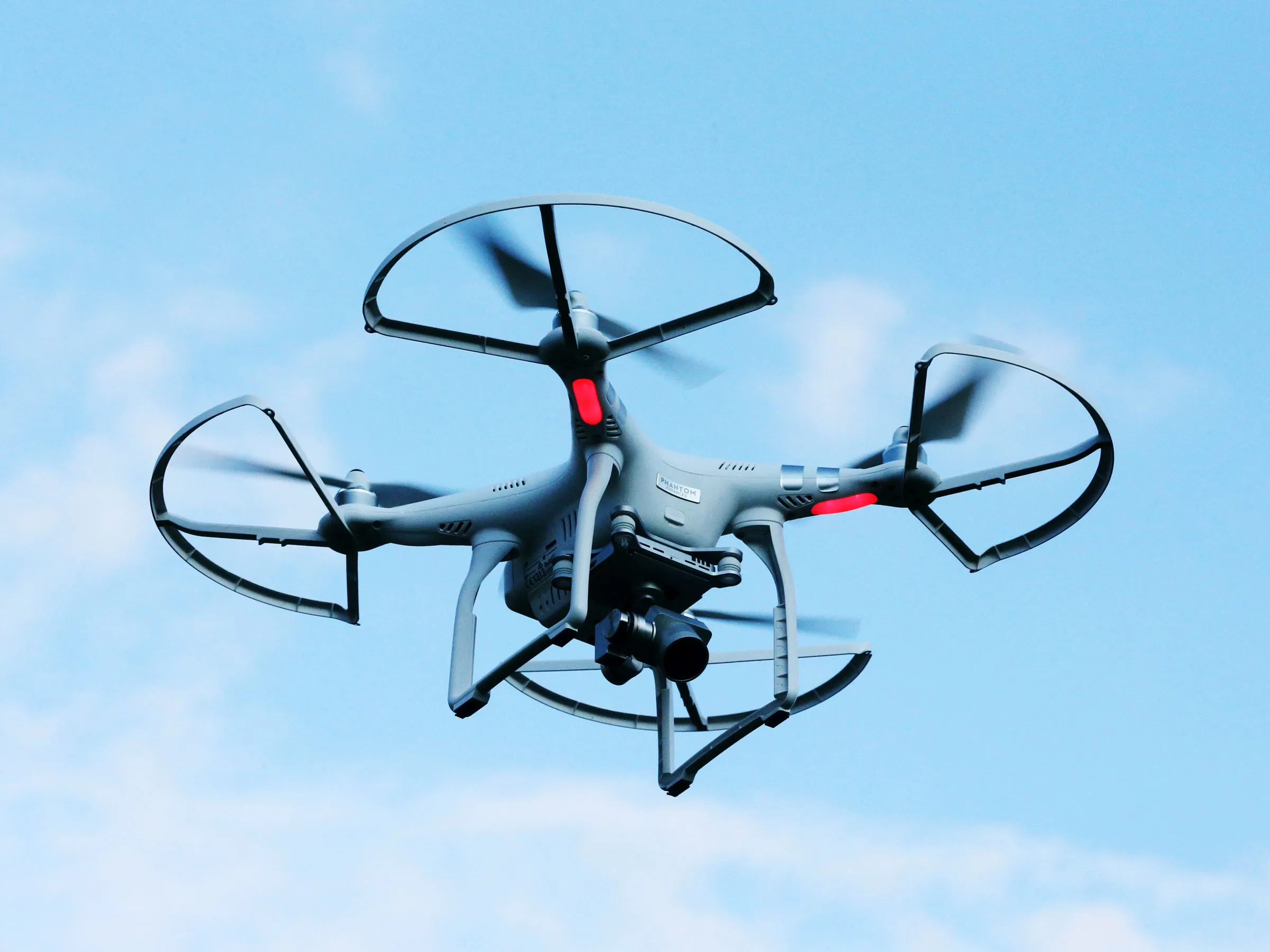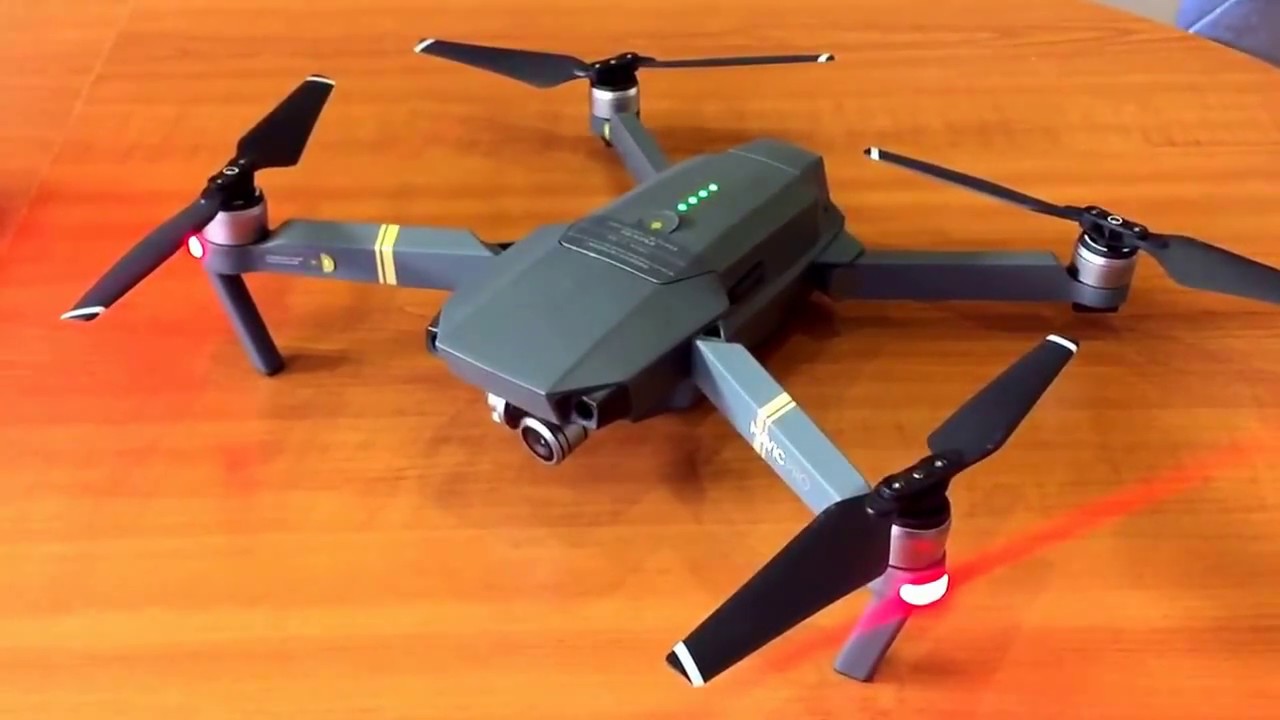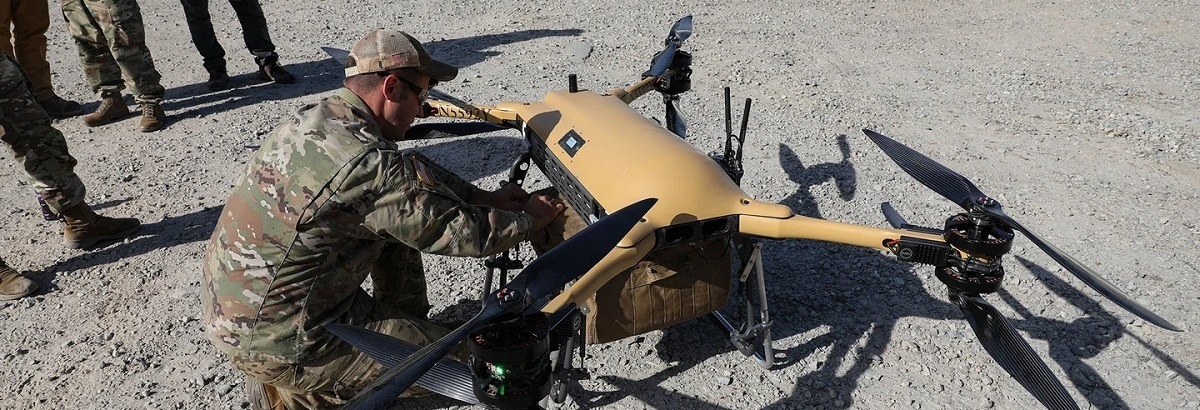Introduction
Welcome to the world of drone inspections, where cutting-edge technology meets efficiency in various industries. Drones, also known as unmanned aerial vehicles (UAVs), have revolutionized the way inspections are conducted, offering a range of benefits that were previously unimaginable. From infrastructure and construction to agriculture and environmental monitoring, drone inspections have become an integral part of modern business operations.
Drone inspections involve the use of aerial robots equipped with cameras and sensors to gather visual data and perform advanced analysis. These flying machines are controlled remotely and can access areas that are difficult or dangerous for humans to reach. By capturing high-quality imagery and collecting precise measurements, drone inspections provide valuable insights and critical information for decision-making.
The rise of drone technology in inspections has not only improved efficiency but also enhanced safety and cost-effectiveness. Traditional inspection methods often involve time-consuming manual labor, scaffolding, and the use of expensive equipment. With drones, inspection tasks can be completed faster and at a lower cost, reducing potential risks and minimizing production downtime.
Moreover, drone inspections offer a valuable tool for data collection and analysis. The data acquired can be processed using advanced software and algorithms to identify anomalies, detect structural weaknesses, monitor changes over time, and predict maintenance needs. This ability to gain actionable insights in real-time helps businesses make informed decisions, increase operational efficiency, and ensure the sustainability of their assets.
In this article, we will explore the various industries and applications where drone inspections have proven their worth. We will also discuss the safety considerations and regulations associated with drone use, as well as the methods employed for conducting drone inspections. Furthermore, we will delve into the data collection and analysis process, showcasing real-life case studies where drone inspections have been successful.
Lastly, we will look at the future potential of drone inspections and how this technology is poised to further revolutionize various industries. So strap in and get ready for an exciting journey into the world of drone inspections!
What is a Drone Inspection?
A drone inspection is a comprehensive process that involves utilizing unmanned aerial vehicles (UAVs) equipped with cameras and sensors to conduct visual assessments and collect data in various industries. These aerial robots are remotely piloted and provide a cost-effective and efficient way to inspect critical infrastructure, monitor crops, evaluate construction sites, and more.
Drones used for inspections come in different shapes and sizes, ranging from small quadcopters to larger fixed-wing aircraft, each specialized for different applications. Equipped with high-resolution cameras, thermal imaging, LiDAR, and other advanced sensors, these drones are capable of capturing detailed imagery and data from unique perspectives.
The primary objective of a drone inspection is to assess the condition and integrity of structures or areas of interest. This can include buildings, bridges, power lines, wind turbines, pipelines, agricultural fields, and even natural habitats. By capturing high-definition images and collecting data, drones provide valuable visual evidence of potential issues or areas requiring attention.
With their ability to fly at various altitudes and access difficult-to-reach areas, drones offer a significant advantage over traditional inspection methods. Instead of manual inspections that require scaffolding, ropes, or climbing, drones can swiftly navigate around obstacles and even conduct inspections in hazardous environments without risking human lives.
Moreover, drone inspections can be carried out more frequently and with greater accuracy. The data collected allows for real-time monitoring and analysis, enabling timely decision-making and proactive maintenance. By identifying problems early on, businesses can avoid costly repairs, improve safety, and optimize the lifespan of their assets.
When conducting a drone inspection, trained pilots and inspectors remotely control the UAVs using a combination of GPS and flight control systems. The drones are programmed to follow specific flight paths and capture images or videos of the targeted areas. This data is then processed using specialized software to create reports, generate 3D models, analyze thermal patterns, or highlight areas of concern.
In summary, a drone inspection is a cutting-edge method of conducting visual inspections using unmanned aerial vehicles. By leveraging advanced technology and remote capabilities, these inspections provide a cost-effective, safe, and efficient way to monitor and assess various industries’ infrastructure and assets.
Benefits of Drone Inspections
The adoption of drone inspections has brought about numerous benefits across industries. Let’s explore some of the key advantages that make drone inspections an attractive option:
- Improved Safety: One of the most significant advantages of drone inspections is the enhanced safety they offer. By eliminating the need for manual inspections in hazardous areas, drones reduce the risk of accidents and injuries to workers. They can access inaccessible locations, such as tall structures or confined spaces, without endangering human lives.
- Time Efficiency: Drone inspections are highly time-efficient compared to traditional inspection methods. They can cover larger areas in less time, allowing for faster inspections and reduced downtime. Drones can swiftly navigate around structures, capturing detailed imagery and data more quickly than manual inspections.
- Cost Savings: Drones offer cost savings in various ways. They require fewer resources compared to manual inspections, eliminating the need for scaffolding, elevated platforms, or heavy equipment. Additionally, drone inspections minimize operational disruptions and downtime, resulting in cost savings for businesses.
- High-Quality Data: Drones are equipped with advanced cameras and sensors that capture high-resolution imagery and collect accurate data. This data can be used to detect anomalies, identify defects, and monitor changes over time. The detailed visual evidence obtained from drone inspections provides valuable insights for decision-making, ensuring the efficient maintenance of assets.
- Enhanced Accuracy: With the ability to capture data from unique angles and perspectives, drones provide a level of accuracy that surpasses manual inspections. They can collect precise measurements, detect fine cracks or defects, and create detailed 3D models. The accuracy and reliability of drone inspections help businesses make more informed decisions regarding maintenance and asset management.
- Environmental Benefits: Drones help reduce the environmental impact associated with traditional inspection methods. They minimize the need for heavy machinery, reduce fuel consumption, and limit disturbance to natural habitats. By adopting drone inspections, businesses can contribute to sustainable practices and minimize their carbon footprint.
The benefits of drone inspections extend across various industries. For example, in the construction industry, drones can provide real-time progress monitoring, identify safety hazards, and assist in quality control. In agriculture, drones help farmers monitor crop health, detect irrigation issues, and optimize resource allocation. These benefits make drone inspections a highly sought-after solution across sectors.
As the technology behind drones continues to advance, the benefits of drone inspections will only increase. With improvements in flight capabilities, sensor technology, and data analysis algorithms, drones will become even more efficient and provide even greater value to businesses.
Applications of Drone Inspections
The applications of drone inspections are diverse and span across various industries. Here are some of the key sectors where drone inspections have proven to be invaluable:
- Construction: Drone inspections have revolutionized the construction industry. From surveying land before construction begins to monitoring construction progress and conducting post-construction inspections, drones provide real-time data for accurate site analysis, quality control, and safety assessments.
- Infrastructure: Drones play a vital role in inspecting critical infrastructure such as bridges, highways, railways, and power lines. They can capture detailed images and detect structural defects or damage, helping identify maintenance needs, assess risks, and ensure the integrity of these vital assets.
- Agriculture: In the agricultural sector, drones are used to monitor crops, assess plant health, and optimize irrigation and fertilization practices. By analyzing multispectral images, drones can detect nutrient deficiencies, pest infestations, and water stress, enabling farmers to make data-driven decisions and maximize crop yields.
- Energy: Drone inspections are highly beneficial for the energy sector, particularly in oil and gas refineries, wind turbines, and solar farms. Drones can efficiently inspect large and complex structures, identifying potential safety hazards, equipment malfunctions, and structural flaws, and reducing costly downtime.
- Insurance: Insurance companies rely on drone inspections to assess property damage and evaluate insurance claims. Drones facilitate quick and accurate inspections after natural disasters, accidents, or other events, providing visual evidence and speeding up the claims settlement process.
- Environmental Monitoring: Drones are used to conduct environmental assessments, such as monitoring wildlife populations, assessing deforestation areas, or conducting water quality inspections. With their ability to reach remote and inaccessible areas, drones contribute to the conservation and preservation of natural habitats.
- Public Safety: In public safety operations, drones assist in search and rescue missions, accident investigation, and disaster response. Drones equipped with thermal cameras and sensors can locate missing persons, assess hazardous situations, and provide real-time situational awareness to emergency responders.
- Infrastructure Inspections: Besides traditional structures, drones are also used for inspecting unique infrastructure, such as towers, dams, tunnels, and historical sites. Drones can capture detailed visual data and assess the condition of these structures, ensuring their stability, preservation, and longevity.
These are just a few examples highlighting the extensive range of applications for drone inspections. As technologies continue to advance and regulations evolve, the possibilities for utilizing drones in inspections will only expand, further benefiting industries and society at large.
Safety Considerations and Regulations
While drone inspections offer numerous benefits, it is crucial to prioritize safety and adhere to regulations to ensure responsible and lawful operations. Here are some key safety considerations and regulations for conducting drone inspections:
- Pilot Training and Licensing: Drone operators must acquire proper training and certification to operate drones commercially. Regulations often require operators to pass a knowledge test and obtain a remote pilot certificate. This ensures that operators understand airspace rules, flight considerations, and emergency procedures.
- Flight Planning and Risk Assessment: Before conducting a drone inspection, it is essential to plan the flight path and assess potential risks. Operators should consider factors such as weather conditions, airspace restrictions, surrounding obstacles, and the presence of people or wildlife. Thorough planning helps minimize accidents and ensures safe operations.
- Visual Line of Sight (VLOS) and Flight Height Limits: Regulations typically require drones to be flown within visual line of sight of the operator. This ensures that the operator can maintain control and avoid collisions with other aircraft or objects. Additionally, flight height limits are in place to prevent interference with manned aircraft and to minimize potential risks.
- Privacy and Data Security: Drone operators must respect privacy rights and adhere to local laws and regulations regarding data collection and storage. It is important to inform individuals if their property or personal information is being captured during drone inspections. Safeguarding the collected data and ensuring its secure storage are also essential.
- Avoiding No-Fly Zones: Operators must be aware of designated no-fly zones, such as airports, military facilities, and restricted airspace. Flying in these restricted areas poses serious risks and can lead to legal consequences. Staying updated on airspace restrictions and following the guidelines from aviation authorities is crucial for safe operations.
- Maintenance and Equipment Checks: Regular maintenance and equipment checks are vital for safe drone operations. Operators should ensure that drones are in proper working condition, with all systems functioning correctly. This includes checking the battery, propellers, flight controls, and sensors to minimize the risk of mid-flight failures.
- Insurance Coverage: Drone operators should consider obtaining liability insurance coverage specific to their drone operations. This provides financial protection in case of accidents or damages caused by the drone during inspections. Insurance coverage adds an extra layer of security and ensures responsible operation.
It is essential for drone operators to stay informed about the specific regulations and guidelines in their jurisdiction. Aviation authorities, such as the Federal Aviation Administration (FAA) in the United States or the Civil Aviation Authority (CAA) in the United Kingdom, provide detailed information on drone regulations that operators must comply with.
By prioritizing safety and adhering to regulations, drone operators can conduct inspections with confidence, ensuring the well-being of people, property, and the environment. Responsible drone operations contribute to the continued growth and acceptance of drone technology in various industries.
How Drone Inspections are Conducted
Drone inspections involve a systematic and well-planned approach to gather visual data and collect valuable information. Here is a general overview of how drone inspections are conducted:
- Preparation and Planning: The first step in conducting a drone inspection is to establish the objectives and scope of the inspection. This includes determining the areas of interest, identifying potential risks or obstacles, and preparing the necessary flight plans. Operators must ensure compliance with local regulations and obtain any required permissions or authorizations.
- Equipment Setup: Once the planning is complete, operators prepare the drone equipment for the inspection. This involves installing the appropriate cameras or sensors, checking battery levels, calibrating the compass and GPS systems, and ensuring that all components are functioning properly. It is essential to conduct a pre-flight inspection to verify the drone’s airworthiness.
- Flight Execution: With the drone equipment ready, the operator executes the flight according to the predetermined flight plan. The drone is controlled remotely using a controller or mobile device, and flight parameters are closely monitored. Operators must adhere to the flight path, maintain visual line of sight, and avoid obstacles or risks during the flight. The drone captures high-resolution images or videos as per the inspection requirements.
- Data Collection: As the drone completes its flight, it collects visual data and other relevant information. This data includes high-quality imagery, thermal images, LiDAR scans, or other sensor measurements, depending on the inspection objectives. The data collected is typically stored on an onboard memory card or transmitted wirelessly to a ground station for later analysis.
- Data Analysis and Reporting: Once the flight is completed, the collected data is analyzed using specialized software or tools. These tools help process the data, create detailed reports, generate 3D models, detect anomalies, or identify areas of concern. The analysis provides valuable insights for decision-making, maintenance planning, or further assessments.
- Post-Flight Inspection and Maintenance: After each inspection flight, it is important to conduct a post-flight inspection of the drone for any damages or issues. Regular maintenance, such as cleaning the sensors, checking the integrity of the propellers, and software updates, is essential to ensure optimal performance in future inspections.
Throughout the entire process, safety considerations, such as assessing weather conditions, avoiding no-fly zones, and addressing any emergencies or technical issues, are crucial. The presence of a trained and experienced pilot is essential to ensure smooth flight operations and the adherence to safety procedures.
The effectiveness and success of a drone inspection depend on careful planning, thorough execution, and accurate data analysis. By following these steps and leveraging the capabilities of drones, businesses can benefit from efficient and comprehensive inspections in various industries.
Data Collection and Analysis
Data collection and analysis are crucial components of drone inspections, enabling businesses to derive actionable insights and make informed decisions. Here’s an overview of the process of data collection and analysis in drone inspections:
Data Collection:
During a drone inspection, the unmanned aerial vehicle (UAV) captures various types of data depending on the inspection objective. This can include high-resolution imagery, thermal images, LiDAR scans, and other sensor measurements. The drone is equipped with specialized cameras and sensors specifically designed for the intended purpose of the inspection.
The captured data is typically stored on an onboard memory card or transmitted wirelessly to a ground station. Advanced drones may have the capability to stream and transmit the data in real-time, allowing for immediate analysis and decision-making.
Data Processing and Analysis:
Once the data is collected, it needs to be processed and analyzed to extract meaningful information. This step involves using specialized software or tools to organize, interpret, and visualize the data. The software can automatically stitch together images, generate 3D models, detect anomalies, analyze thermal patterns, or highlight areas of concern.
Through data analysis, patterns and trends can be identified, structural defects can be pinpointed, and areas requiring maintenance or repairs can be determined. The analysis may involve comparing current data with previous inspections to monitor changes over time, assess deterioration rates, or predict maintenance needs.
Reporting and Visualization:
The results of the data analysis are compiled into reports or visual representations that are easily understandable by stakeholders. This may include comprehensive reports with annotated images, detailed 3D models, or interactive visualizations illustrating the condition of assets and highlighting areas of concern.
These reports and visual representations provide a clear overview of the inspection findings, facilitating decision-making, resource allocation, and prioritization of maintenance tasks. They enable stakeholders to understand the state of their assets and take appropriate actions to ensure their longevity.
Integration with Other Systems:
Drone inspection data can be further integrated with other systems to enhance its utility. For example, the data collected from drone inspections can be integrated with asset management, facility management, or geographic information systems (GIS). This integration allows for streamlined workflows, centralizes data storage and retrieval, and supports predictive maintenance strategies.
By collecting and analyzing data from drone inspections, businesses gain valuable insights that aid decision-making and help optimize asset management. The ability to accurately assess the condition of infrastructure, identify potential risks, and predict maintenance needs contributes to increased operational efficiency and cost savings.
Case Studies: Successful Drone Inspections
The successful implementation of drone inspections across industries has resulted in significant improvements in efficiency, cost savings, and safety. Let’s delve into a few compelling case studies that highlight the effectiveness and positive outcomes of drone inspections:
- Infrastructure Inspections: In the field of infrastructure, drones have revolutionized inspection processes. For example, a railway company utilized drones to inspect its vast network of tracks and bridges. The drones captured high-resolution images and thermal data to identify track defects, loose bolts, and potential structural issues. This enabled the company to prioritize necessary repairs, improve safety, and reduce network downtime.
- Wind Turbine Inspections: Inspecting wind turbines was traditionally a time-consuming and potentially risky task. However, with drones, the process has become faster, safer, and more cost-effective. Drones equipped with high-resolution cameras and thermal imaging sensors can quickly assess the structural integrity of wind turbine blades, identify surface defects, and detect heat anomalies. This information helps wind farm operators optimize maintenance schedules, reduce downtime, and extend the lifespan of their equipment.
- Agricultural Crop Monitoring: Drones have transformed the way farmers monitor their crops. By capturing aerial images and using specialized software, farmers can analyze plant health, detect disease outbreaks, and identify areas with inadequate irrigation. This allows for targeted interventions, such as precisely applying fertilizers and pesticides, resulting in improved crop yields, reduced resource wastage, and optimized farming practices.
- Building Inspections: Inspecting tall buildings and structures for maintenance and safety purposes can be challenging and costly. Drones have made it easier and more efficient. They can capture high-definition images of building facades, roofs, and hard-to-reach areas, enabling inspectors to assess the condition of the structure without the need for scaffolding or workers at heights. This approach saves time, improves safety, and enables more frequent inspections to identify potential issues early on.
- Oil and Gas Facility Inspections: In the oil and gas industry, drones have proven instrumental in inspecting pipelines, tanks, and other assets. They can perform visual inspections, detect leaks, and monitor the condition of remote or hazardous areas. By using drones, companies have reduced the need for manned inspections, minimized operational disruptions, and enhanced safety by avoiding personnel exposure to potentially dangerous environments.
These case studies demonstrate the effectiveness of drone inspections across various industries. By leveraging the capabilities of drones, businesses have experienced improved operational efficiency, optimized asset management, and significant cost savings. With ongoing advancements in technology, the potential for drone inspections across industries continues to expand, offering even greater benefits and opportunities.
Future of Drone Inspections
The future of drone inspections holds exciting possibilities as technology continues to advance and regulations evolve. Here are some key trends and developments that are shaping the future of drone inspections:
Advanced Sensors and Data Collection: Drone inspections will benefit from more advanced sensors and data collection capabilities. This includes improved cameras, higher-resolution sensors, enhanced thermal imaging, and the integration of artificial intelligence (AI) for real-time data analysis. These advancements will enable even more accurate and detailed inspections, allowing for better decision-making and proactive maintenance.
Increased Autonomy and Automation: Drones are becoming more autonomous, with advancements in flight control systems, obstacle detection, and navigation technologies. This will reduce the reliance on manual piloting and enable drones to perform inspections with minimal human intervention. Automation will not only increase efficiency but also free up resources and allow operators to focus on data analysis and interpretation.
Collaboration with Robotics and AI: The integration of drones with robotics and AI technologies opens up new possibilities for automated inspections. Drones equipped with robotic arms or specialized tools can perform physical inspections and even carry out basic repairs or maintenance tasks. AI algorithms can analyze vast amounts of data, detect patterns, and predict equipment failures, further enhancing the efficiency and effectiveness of drone inspections.
Real-Time Data Analysis and Reporting: Advancements in onboard processing and communication technology will enable drones to perform real-time data analysis and generate immediate reports. This will empower stakeholders to make informed decisions promptly, such as identifying critical maintenance needs, adjusting resource allocation, or taking immediate action to mitigate risks. Real-time reporting can lead to more efficient operations and improved asset management.
Integration with Internet of Things (IoT) and Big Data Analytics: Drones can be integrated with IoT devices and systems to gather data from multiple sources, such as sensors on infrastructure or equipment. This integration enables comprehensive asset monitoring and data-driven insights. Additionally, the combination of drone-collected data with big data analytics can unveil hidden patterns, optimize maintenance strategies, and support predictive maintenance, resulting in further cost savings and improved asset performance.
Regulatory Framework and Standardization: As the technology matures, regulatory frameworks will continue to evolve to address safety, privacy, and airspace management concerns. Regulatory bodies are working to establish clear guidelines, define standards, and streamline the approval process for commercial drone operations. This will foster greater confidence and wider adoption of drone inspections across industries.
Emerging Applications: The future of drone inspections extends into new frontiers. From underwater inspections in marine environments to inspections in extreme weather conditions or in space, drones are being developed and adapted for various specialized applications. These emerging applications will enable inspections in previously inaccessible or dangerous environments, expanding the range of industries that can benefit from drone technology.
As technology continues to progress, the future of drone inspections holds enormous potential for improving efficiency, safety, and decision-making in a wide range of industries. It is an exciting time as drones become increasingly integrated into our daily operations, offering novel and innovative solutions to complex inspection challenges.
Conclusion
The advent of drone inspections has revolutionized the way industries conduct inspections and gather valuable data. With their ability to access hard-to-reach areas, capture high-resolution imagery, and analyze data, drones offer numerous benefits in terms of efficiency, cost savings, and safety.
Throughout this article, we explored the wide range of applications and benefits of drone inspections. From infrastructure and construction to agriculture and environmental monitoring, drones have proven their worth, providing valuable insights and facilitating informed decision-making.
By replacing traditional manual inspections with drones, businesses have experienced improved safety, reduced costs, and increased operational efficiency. Drones offer a time-efficient and cost-effective alternative, enabling frequent inspections, detecting anomalies early, and optimizing asset management.
Safety considerations and adherence to regulations play a crucial role in the successful implementation of drone inspections. Operators must obtain proper training and licenses, thoroughly plan flights, and prioritize the security and privacy of data collected during inspections.
The future of drone inspections is promising, with advancements in technology paving the way for enhanced data collection, autonomy, and integration with other systems. As drones become more capable, the potential for real-time analysis, automation, and collaboration with robotics and AI further expands.
It is important for businesses to stay updated on the evolving regulatory landscape and harness the full potential of drone inspections. By embracing this technology, businesses can improve operations, optimize maintenance strategies, and make informed decisions, ultimately contributing to a safer, more efficient, and sustainable future.







